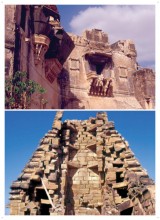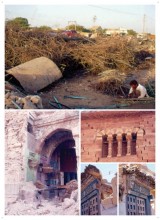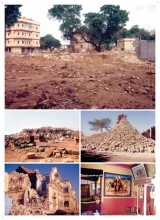Earthquake
Gujarat, Saurashtra and especially Kutch have been some of the prime earthquake-prone regions of the world. In 1819 earthquake, an 80 km long, 6 km wide and up to 6 m high geological formation came out of the ground and was termed Allah Bund! In my own life I have known of three or four big tremors and have experienced the big one of January 2001. Most remarkable was the silence and almost no activity in the first fifteen days, especially in Bhuj region. On the 17th of March the city was still littered with heaps of wreckage and paths were carved out of them, the stink was unbearable and the city was a ghost town. Small places around were barely coming back to life and rare visitors were told stories at the earthquake sites. Help had arrived but the socio-cultural milieu responded in a restrictive manner; “our pride better not be hurt while you help us” was felt all over. The social hierarchy was openly enforced and that was the ‘notion of equity’. Nevertheless the meetings and consensus building had been more participatory than at other times. Debris and its disposal was the single most crucial problem to be tackled. Even ponds were filled up in the process. Unlike in Ahmedabad, damage assessment was out of place as the damage was total and complete. Unlawfully built seven and ten storeyed buildings had tilted by meters.



